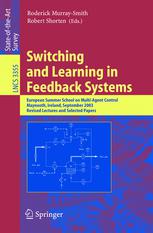

Most ebook files are in PDF format, so you can easily read them using various software such as Foxit Reader or directly on the Google Chrome browser.
Some ebook files are released by publishers in other formats such as .awz, .mobi, .epub, .fb2, etc. You may need to install specific software to read these formats on mobile/PC, such as Calibre.
Please read the tutorial at this link: https://ebookbell.com/faq
We offer FREE conversion to the popular formats you request; however, this may take some time. Therefore, right after payment, please email us, and we will try to provide the service as quickly as possible.
For some exceptional file formats or broken links (if any), please refrain from opening any disputes. Instead, email us first, and we will try to assist within a maximum of 6 hours.
EbookBell Team

4.8
64 reviewsA central theme in the study of dynamic systems is the modelling and control of uncertain systems. While ‘uncertainty’ has long been a strong motivating factor behind many techniques developed in the modelling, control, statistics and mathematics communities, the past decade, in particular, has witnessed remarkable progress in this area with the emergence of a number of powerful newmethodsforbothmodellingandcontrollinguncertaindynamicsystems. The speci?c objective of this book is to describe and review some of these exciting new approaches within a single volume. Our approach was to invite some of the leading researchers in this area to contribute to this book by submitting both tutorial papers on their speci?c area of research, and to submit more focussed research papers to document some of the latest results in the area. We feel that collecting some of the main results together in this manner is particularly important as many of the important ideas that emerged in the past decade were derived in a variety of academic disciplines. By providing both tutorial and researchpaperswehopetobeabletoprovidetheinterestedreaderwithsu?cient background to appreciate some of the main concepts from a variety of related, but nevertheless distinct ?elds, and to provide a ?avor of how these results are currently being used to cope with ‘uncertainty. ’ It is our sincere hope that the availability of these results within a single volume will lead to further cro- fertilization of ideas and act as a spark for further research in this important area of applied mathematics.